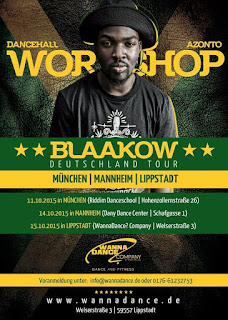Idag har jag bott här en hel månad! Så galet! Men jag älskar det, och tiden flyger verkligen fram. Börjar dock sakna alla där hemma, men jag vet att det kommer gå om inte ännu snabbare tills jullovet. Jag har verkligen insett att det är så mycket som man kan ta för givet när man bor hemma som man måste fixa helt själv nu (jag är inte bortskämd jag lovar). När man tränar så mycket så vill man bara komma hem till färdiglagad mat och ett välstädat hus. Men men! Man kan inte få allt.
Idag hade vi en gästlärare från Spanien på skolan. Vi började lektionen med att stå tätt inpå varandra och gunga i hela kroppen i några minuter. Sjukt konstig känsla i början som utvecklades till härlig som sedan blev helt magisk när man kände all energi som sprudlade i rummet. Älskade hennes stil, modern/street med musik från spanska gitarrer till dancehall låtar. Se henne dansa
här. Det blir också extra kul med sådana extra lektioner när vi har så mycket teknik hit och dit hela tiden. Det är då man kollar in på tvåorna och treornas lektioner och ser deras övningar och kombinationer som man blir inspirerad och taggad till att ge järnet!
Eftersom det inte riktigt är tillåtet att filma lektionerna så får jag visa er vad jag gör efter skolan istället. Här är en koreo som jag och en kompis jobbade fram idag på eftermiddagen. Lägg märke till den lilla insekten framför kameran, han ville också va med. Enjooooy!
Today I've lived here for exactly one month! So crazy! But I love it, and time really flies. I'm starting to miss everyone at home though, but I know that time will only go faster from now until christmas holiday. I've realized now that there is so much that you can take for granted when you live at home, that you have to fix all by yourself now (I'm not spoiled I promise). But when you train all day, then all you want is to come home to newly cooked food and a clean house. Well well! You can't have it all.
Today we had a quest teacher from Spain at school. We started the class with standing in a tight circle and bounce up and down with closed eyes in a few minutes. At first it was kind of strange, but then it developed and it was really nice. When we stopped, the energy that circulated in the room was amazing. I loved her style too, modern/street with music from spanish guitars to dancehall. Watch her dance here. Those classes are also extra fun since it's really a chance to do something different than all the technique that we train. But the days when the motivation is kind of low, you just look into the classes of the second and third years and then you're inspiration is going and you're ready to give it your all again.
Since it's not allowed to film during class I will just have to show you what I do after class instead. Here's a small combination that a friend and I worked on today. Notice the little bug in fornt ofthe camera... He wanted to be in the video too. Enjoooy!

















